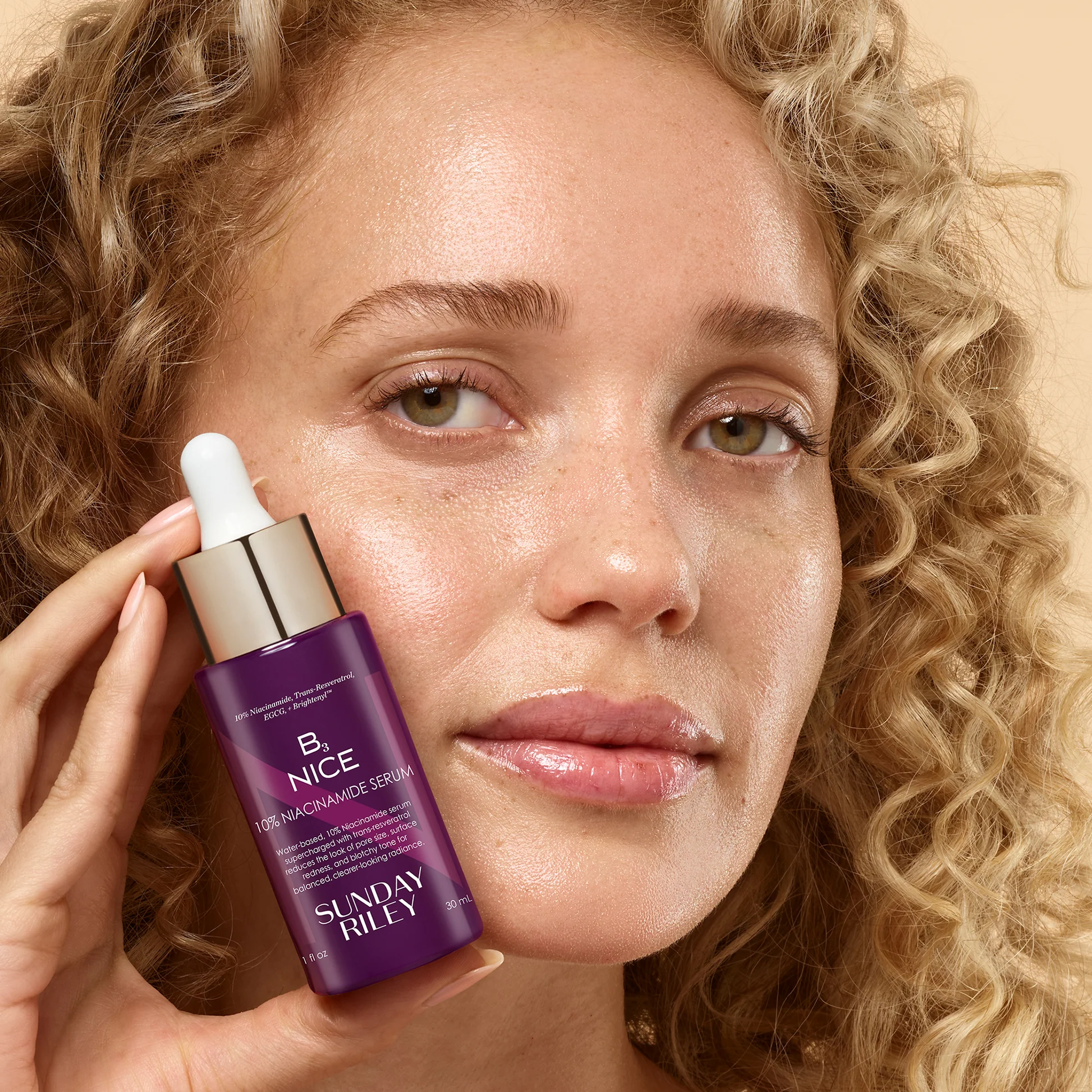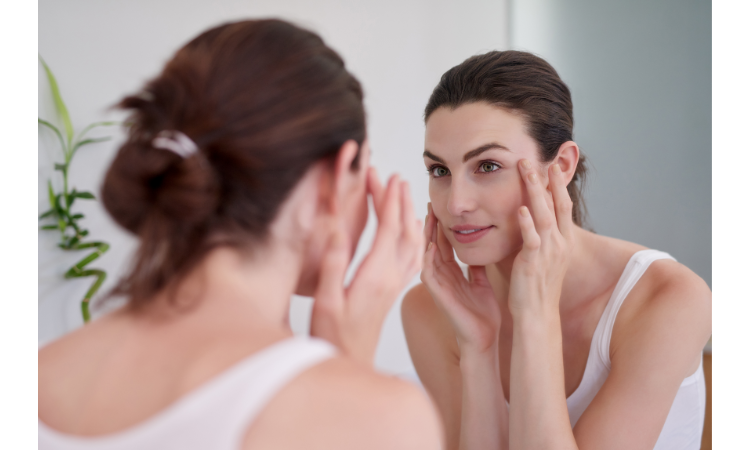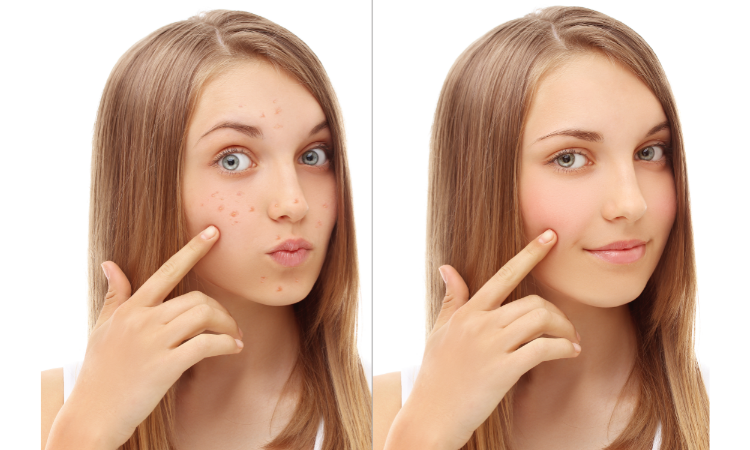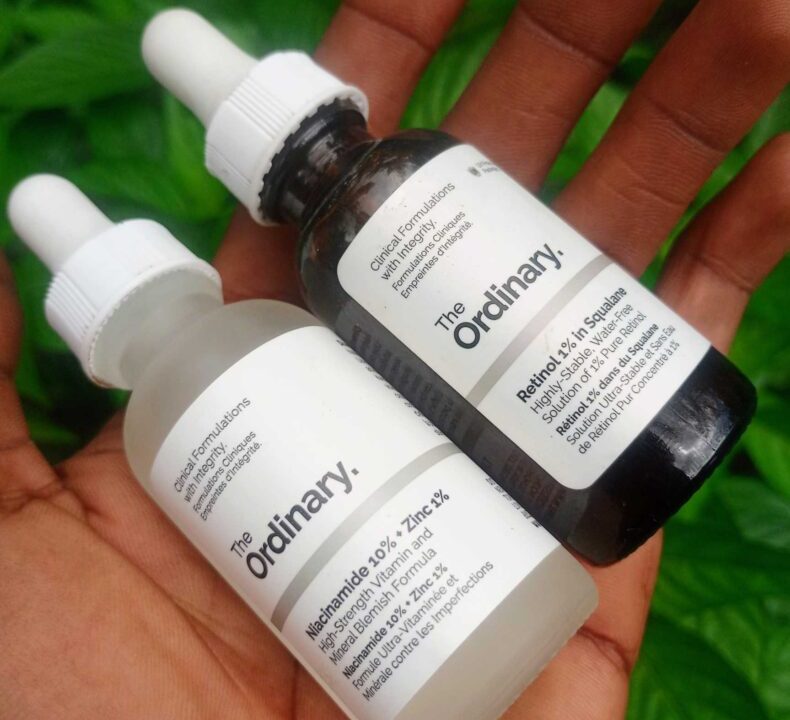Niacinamide has recently gained popularity as a retinol alternative for those seeking a gentle, yet effective way to achieve radiant, youthful skin. This powerful skincare ingredient has a multitude of benefits, ranging from reducing inflammation to improving skin texture. As more and more people seek safer and more natural alternatives to retinol, niacinamide has emerged as a top contender. In this blog post-Why Niacinamide as Retinol Alternative is Your New Best Friend for Radiant, Youthful Skin, we’ll explore the various reasons why niacinamide is becoming a popular retinol alternative and how it can help you achieve healthier, more youthful-looking skin.
What is Niacinamide?

Niacinamide, also known as nicotinamide, is a form of vitamin B3. It is an essential nutrient that plays a crucial role in various cellular processes, including energy production and DNA repair. In skincare, niacinamide has been shown to offer a wide range of benefits, making it a popular ingredient in many skincare products. It is generally well-tolerated and suitable for all skin types, including sensitive and acne-prone skin.
Niacinamide vs. Retinol

While both niacinamide and retinol are excellent skincare ingredients, they differ in several ways. Retinol, a derivative of vitamin A, is known for its powerful anti-aging and skin-smoothing properties. However, it can also cause irritation, redness, and dryness for some individuals, especially when used in high concentrations or with other potent ingredients.
Niacinamide, on the other hand, is less likely to cause irritation and can even help soothe the skin. In fact, studies have shown that niacinamide can be an effective alternative to retinol for those with sensitive skin or who cannot tolerate retinol. Additionally, niacinamide can be used with other ingredients like hyaluronic acid and zinc without causing irritation, making it a versatile addition to any skincare routine.
The Benefits of Niacinamide for Your Skin

Niacinamide offers an impressive list of benefits for your skin, including:
- Reduces inflammation: Niacinamide has anti-inflammatory properties, which can help reduce redness and irritation in the skin, making it especially beneficial for those with acne or rosacea.
- Improves skin barrier function: Niacinamide helps strengthen the skin’s barrier, preventing moisture loss and protecting the skin from environmental damage.
- Fades hyperpigmentation: Niacinamide has been shown to help fade dark spots and even out skin tone, making it an excellent ingredient for those dealing with post-inflammatory hyperpigmentation or sun damage.
- Minimizes fine lines and wrinkles: Niacinamide boosts collagen production, which can help improve skin elasticity and reduce the appearance of fine lines and wrinkles.
- Regulates oil production: For those with oily or acne-prone skin, niacinamide can help regulate sebum production, reducing the likelihood of breakouts.
- Boosts skin hydration: Niacinamide works synergistically with other hydrating ingredients, like hyaluronic acid, to help increase skin hydration and plumpness.
How to Use Niacinamide with Retinol and Other Ingredients

One of the great things about niacinamide is its compatibility with a wide range of skincare ingredients, including retinol. Many people wonder, “Can niacinamide and retinol be used together?” The answer is yes! In fact, using niacinamide with retinol can help mitigate some of the potential irritation that retinol can cause.
When incorporating niacinamide into your skincare routine, you can apply it before or after retinol. However, it’s essential to wait for a few minutes between applications to allow each product to absorb fully.
Additionally, niacinamide can be used alongside other powerful ingredients like alpha arbutin, vitamin C, and azelaic acid without causing irritation. Just be sure to patch test and introduce new products gradually to ensure your skin can tolerate the combination.
How to Incorporate Niacinamide into Your Skincare Routine

To effectively incorporate niacinamide into your skincare routine, follow these steps:
- Cleanse your face with a gentle cleanser.
- Apply a toner containing niacinamide, if using one.
- If using a niacinamide serum or booster, apply it after your toner and before your moisturizer.
- Apply your moisturizer, ensuring it contains niacinamide or layering it over your niacinamide serum.
- If using retinol, apply it either in the morning or at night, alternating with niacinamide to minimize the potential for irritation.
Remember to patch-test new products and introduce them gradually to avoid irritation.
Top Niacinamide Products for Radiant, Youthful Skin

There are many niacinamide products available on the market, but here are a few fan favorites:
- The Ordinary Niacinamide 10% + Zinc 1%: This affordable serum combines the benefits of niacinamide with zinc, making it an excellent option for those with acne-prone or oily skin.
- Paula’s Choice 10% Niacinamide Booster: This lightweight, water-based booster can be added to your favorite moisturizer or serum for an extra dose of niacinamide.
- CeraVe Resurfacing Retinol Serum: This gentle retinol serum also contains niacinamide, making it a fantastic choice for those looking to incorporate both ingredients into their routine.
- La Roche-Posay Effaclar Duo: This dual-action acne treatment combines niacinamide with salicylic acid to help clear and prevent breakouts.
How Much Niacinamide Is Too Much?
Most skincare products containing niacinamide have a concentration of 4-5%, which is generally considered safe and effective for daily use. However, it’s essential to follow the instructions on the product packaging and consult with a dermatologist if you have any concerns about using niacinamide in your skincare routine.
Niacinamide and Other Skincare Ingredients
Niacinamide can be safely combined with many other skincare ingredients, including hyaluronic acid, alpha arbutin, and zinc. However, it is best to avoid mixing niacinamide with vitamin C, as the combination can cause the niacinamide to convert to niacin, which may result in skin flushing and irritation.
Frequently Asked Questions About Niacinamide
Q: How often should I use niacinamide in my skincare routine?
A: Niacinamide can be used once or twice daily, depending on your skin’s needs and tolerance.
Q: Can I use niacinamide with vitamin C?
A: Yes, niacinamide can be used with vitamin C. However, some people prefer to alternate their use, applying one in the morning and the other in the evening.
Q: Are niacinamide and nicotinamide the same thing?
A: Yes, niacinamide and nicotinamide are interchangeable terms referring to the same form of vitamin B3.
Q: Can I use niacinamide, retinol, and hyaluronic acid together?
A: Yes, these ingredients can be used together, as niacinamide and hyaluronic acid can help soothe the skin and reduce potential irritation caused by retinol. However, be sure to introduce them gradually to avoid sensitivity.
Q: Is niacinamide suitable for all skin types?
A: Niacinamide is generally well-tolerated and suitable for all skin types, including sensitive and acne-prone skin. However, if you have any concerns, consult with a dermatologist before incorporating niacinamide into your skincare routine.
Conclusion
Niacinamide is a versatile and powerful skincare ingredient that offers numerous benefits for radiant, youthful skin. As a retinol alternative, it’s suitable for all skin types and can be used with a wide range of
other skincare ingredients, making it an excellent addition to any skincare routine. Whether you’re looking to reduce inflammation, improve skin barrier function, fade hyperpigmentation, or minimize the appearance of fine lines and wrinkles, niacinamide could be your new best friend for achieving radiant, youthful skin.
Remember to always patch test new products and introduce them gradually to ensure your skin can tolerate the combination of ingredients. With a little patience and consistency, you’ll be well on your way to achieving the beautiful, healthy skin you’ve always wanted.
So, if you haven’t already, consider adding niacinamide to your skincare routine and experience its remarkable benefits firsthand. It might just become your new best friend for radiant, youthful skin!
